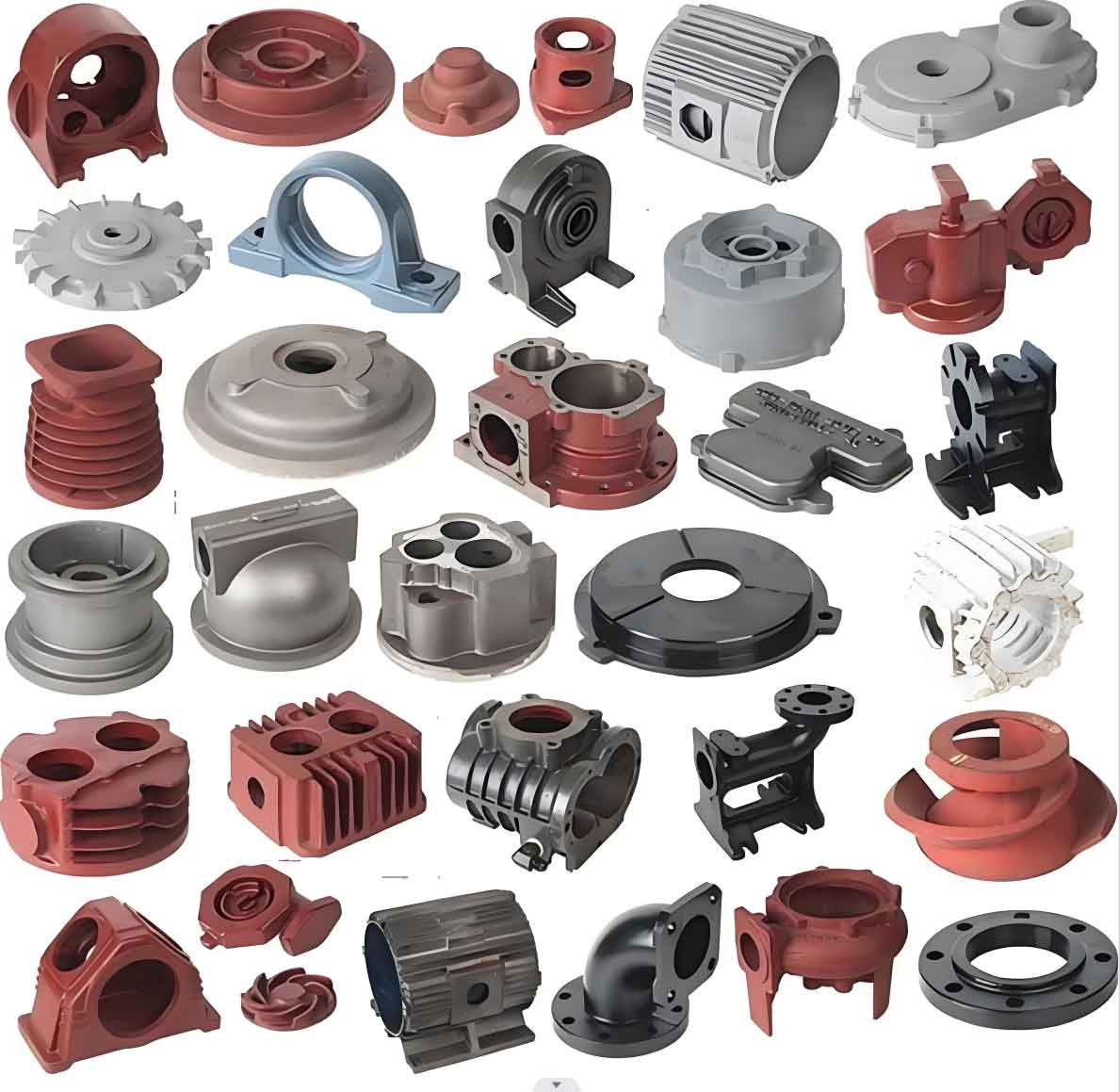Ductile cast iron is widely used in heavy machinery due to its excellent balance of strength and ductility, which is critical for optimal performance under demanding conditions. Achieving this balance involves careful control of the material’s composition, microstructure, and processing techniques. Here’s a comprehensive overview of how ductile cast iron can be optimized for use in heavy machinery:

Key Properties of Ductile Cast Iron for Heavy Machinery
- Strength:
- Tensile Strength: Ductile cast iron typically exhibits tensile strengths ranging from 60,000 to 120,000 psi, which is crucial for components subjected to high loads.
- Yield Strength: High yield strength (around 40,000 to 90,000 psi) ensures that the material can withstand significant stress without permanent deformation.
- Ductility:
- Elongation: Ductile cast iron offers elongation ranging from 5% to 25%, which allows it to absorb impacts and deform without fracturing, enhancing durability.
- Impact Resistance: The presence of nodular graphite imparts superior impact resistance compared to gray iron, making ductile cast iron suitable for dynamic and shock-loading conditions.
Microstructural Control
- Graphite Nodules:
- Shape and Distribution: Achieving a high nodule count with spherical (nodular) graphite is essential for enhancing both strength and ductility. The nodules act as stress relievers, preventing crack propagation.
- Nodule Size: Smaller and uniformly distributed nodules are preferred, as they contribute to a more homogenous and tough microstructure.
- Matrix Structure:
- Ferritic Matrix: Provides excellent ductility and impact resistance but lower strength. Suitable for applications where high toughness is required.
- Pearlitic Matrix: Offers higher strength and hardness at the expense of some ductility. Ideal for applications requiring wear resistance.
- Mixed Matrix: A combination of ferrite and pearlite provides a good balance of strength and ductility, making it suitable for a wide range of heavy machinery applications.
Alloying Elements
- Silicon (Si):
- Enhances ferrite stability and improves overall strength.
- Increases oxidation resistance, beneficial for components exposed to high temperatures.
- Nickel (Ni):
- Enhances toughness and strength by stabilizing the austenitic phase.
- Improves corrosion resistance, extending the lifespan of machinery components.
- Molybdenum (Mo):
- Increases hardenability and high-temperature strength.
- Promotes the formation of bainitic or martensitic structures, enhancing wear resistance.
- Chromium (Cr):
- Improves hardenability and corrosion resistance.
- Forms hard carbides that enhance wear resistance.
Processing Techniques
- Melt Treatment:
- Inoculation: Proper inoculation is essential for achieving the desired nodule count and distribution. This involves adding inoculants such as ferrosilicon during the melting process.
- Nodulizing Treatment: Adding magnesium or cerium ensures the formation of spherical graphite nodules.
- Heat Treatment:
- Austempering: This heat treatment process transforms the matrix into ausferrite, combining high strength and toughness. It involves heating the casting to an austenitizing temperature, followed by rapid cooling to an intermediate temperature and holding it there.
- Annealing: Reduces internal stresses and improves ductility, making the material more suitable for dynamic loading conditions.
Practical Applications in Heavy Machinery
- Engine Components:
- Crankshafts: Require high strength and fatigue resistance. ductile cast iron’s nodular graphite and optimized matrix structure provide the necessary durability.
- Connecting Rods: Benefit from ductile cast iron’s balance of strength and ductility, ensuring reliable performance under cyclic loads.
- Transmission Systems:
- Gears: Need high wear resistance and toughness. Alloying elements like chromium and molybdenum enhance these properties in ductile cast iron.
- Bearings: Ductile cast iron’s ability to absorb impacts and resist wear makes it ideal for bearing applications in heavy machinery.
- Structural Components:
- Frames and Housings: Require a material that can withstand high loads and impacts. ductile cast iron’s combination of strength, ductility, and impact resistance makes it suitable for these applications.
- Hydraulic Cylinders: Benefit from ductile cast iron’s toughness and ability to resist deformation under high pressure.
Conclusion
Balancing strength and ductility in ductile cast iron for heavy machinery involves optimizing the material’s composition, microstructure, and processing techniques. By carefully controlling the formation of graphite nodules, selecting appropriate alloying elements, and applying suitable heat treatments, ductile cast iron can be tailored to meet the demanding requirements of heavy machinery applications. This ensures components that are strong, durable, and capable of withstanding high loads and dynamic conditions, ultimately enhancing the performance and lifespan of the machinery.
